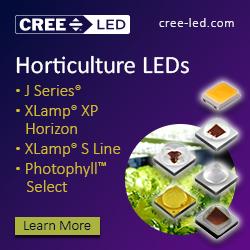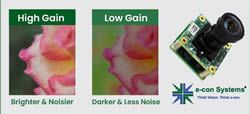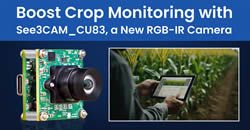How Are Gain and Image Quality Related?
Gain refers to the amplification of the signal from the image sensor to ensure that the imaging process meets defined purposes. However, trade-offs may occur in some cases. Learn about the types of gain, their differences, and their relationship with image quality.
What is Interpolation? Understanding Image Perception in Embedded Vision Camera Systems
Interpolation is a mathematical technique used to estimate unknown values that lie between known data points. Interpolation helps transform raw sensor data into stunning, full-color images in embedded vision systems.
Boost Crop Monitoring with See3CAM_CU83, a New RGB-IR Camera
Boost crop monitoring with e-con Systems' See3CAM_CU83 RGB-IR camera. Capture visible and NIR light for early stress detection, NDVI mapping, and improved crop health, offering cost-effective, real-time insights.
What Causes Blooming Artifacts in Microscopic Imaging and How to Prevent Them
Advanced camera technologies are used with microscopes for diagnostics in the medical and life sciences industry. The occurrence of different types of imaging artifacts is a major challenge faced in microscopic imaging.
Optical Zoom vs. Digital Zoom: See What Best Suits Your Embedded Vision Application
There are two major approaches to camera-related magnification - optical zoom and digital zoom. One relies on manual adjustments while the other leverages software algorithms. Explore the differences, advantages, and limitations of both these approaches.
Robot Solution for Automating the Lettuce Harvest
The lettuce's outer, or 'wrapper', leaves will be mechanically removed to expose the stem. Machine vision and artificial intelligence are then used to identify a precise cut point on the stem to neatly separate the head of lettuce.
Records 1 to 6 of 6
Featured Product

Maximize Growth and Savings with Cree LED's J Series® LEDs
Cree LED's J Series® LEDs offer a versatile range of solutions for horticulture applications, delivering exceptional performance and efficiency. The J Series 2835 3V N Class Color LEDs are available in 15 vibrant colors with industry-leading efficacy, providing tailored lighting options for plant growth. The J Series JR5050C E Class White LEDs boast the highest efficacy among high-power LEDs, enabling up to 40% system cost savings. For additional flexibility, the J Series JR5050B K Class White LEDs offer best-in-class efficacy with 6V and 30V options. The J Series JB3030C E Class White LEDs provide outstanding 3030 efficiency with a typical output of up to 3.33 PPF/W, while maintaining footprint compatibility with the popular 301B/H. Lastly, the J Series JB2835B G Class White LEDs feature the highest efficacy in the 2835 platform, ensuring optimal performance for horticulture lighting systems.






